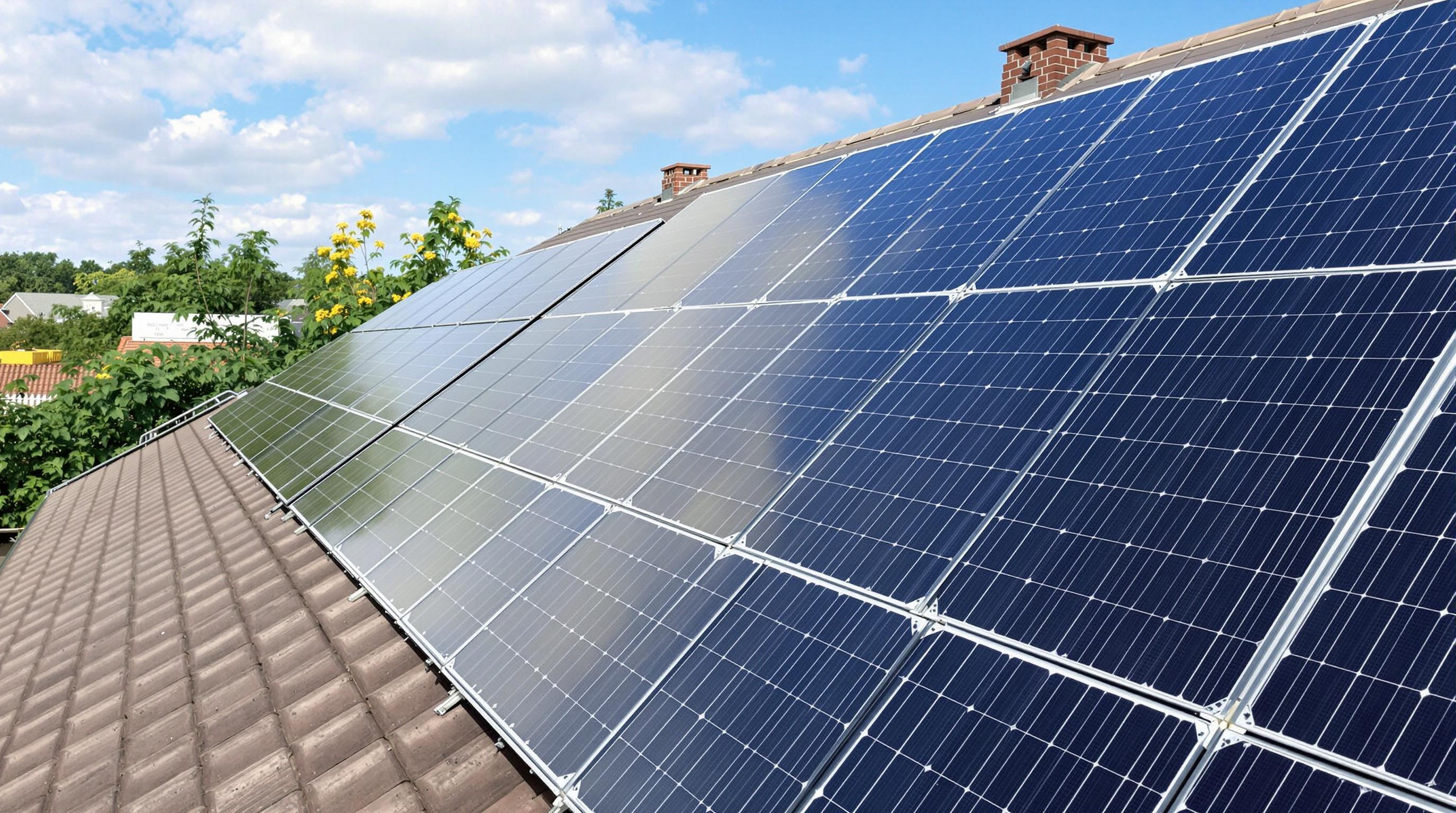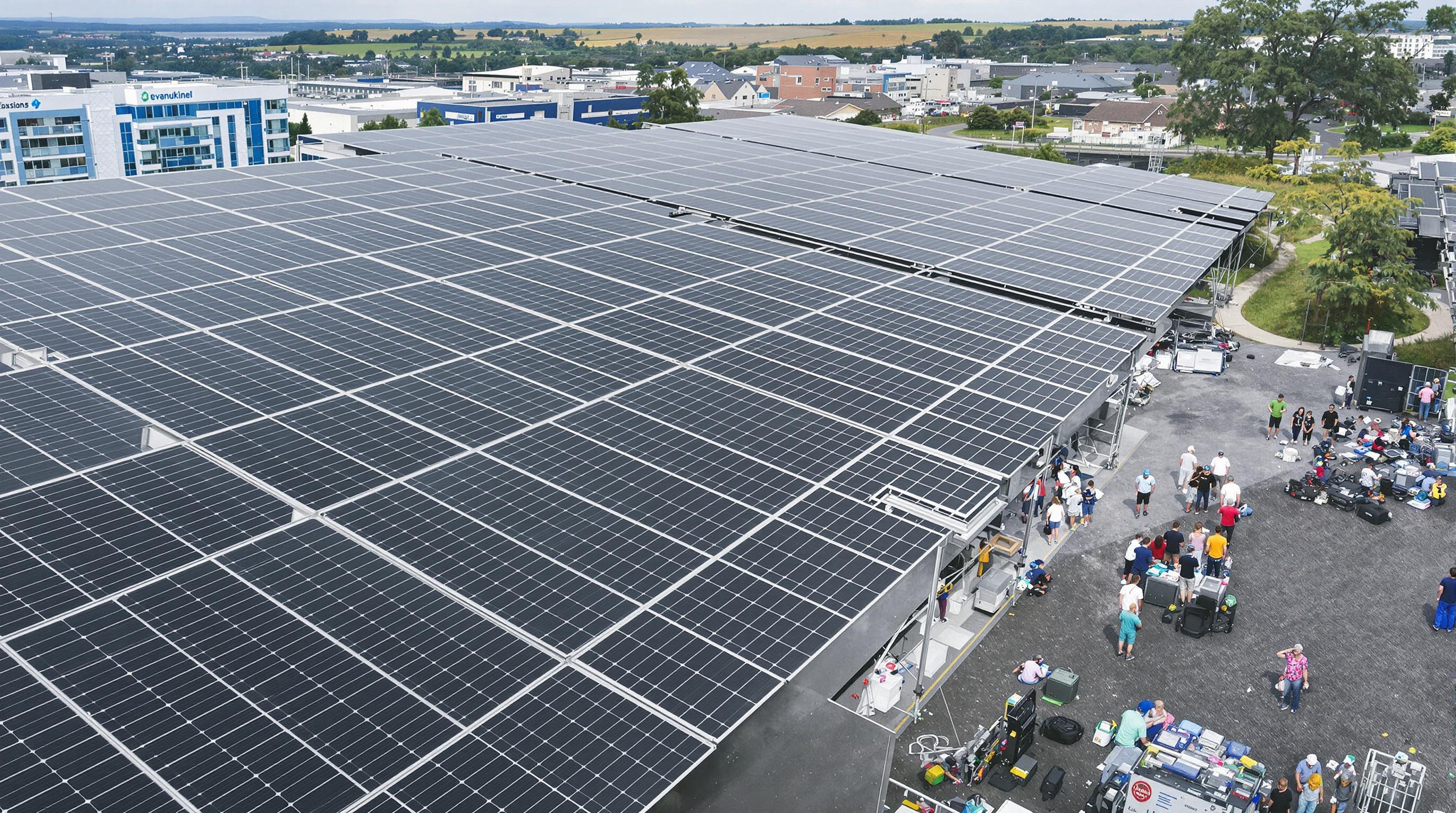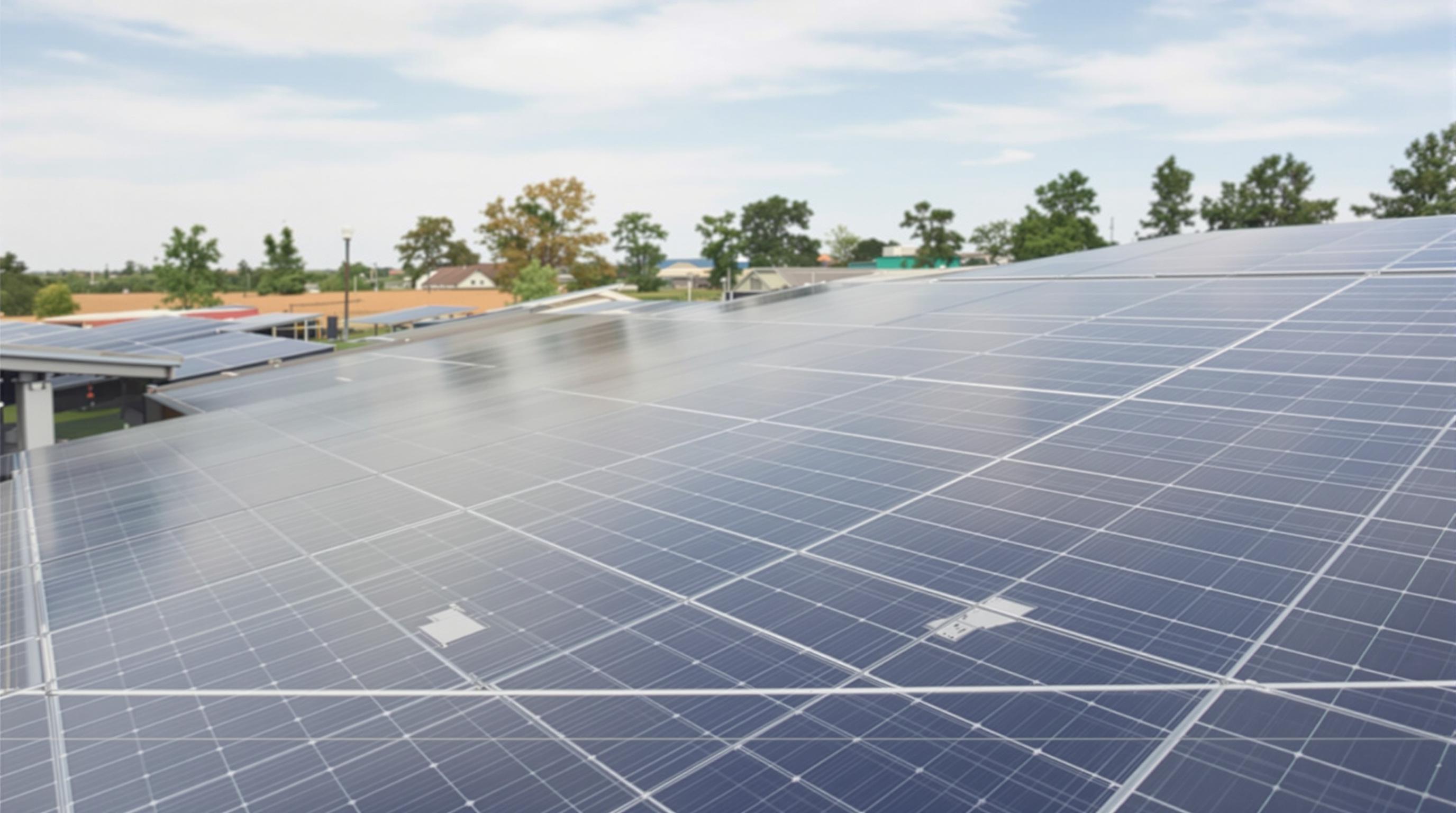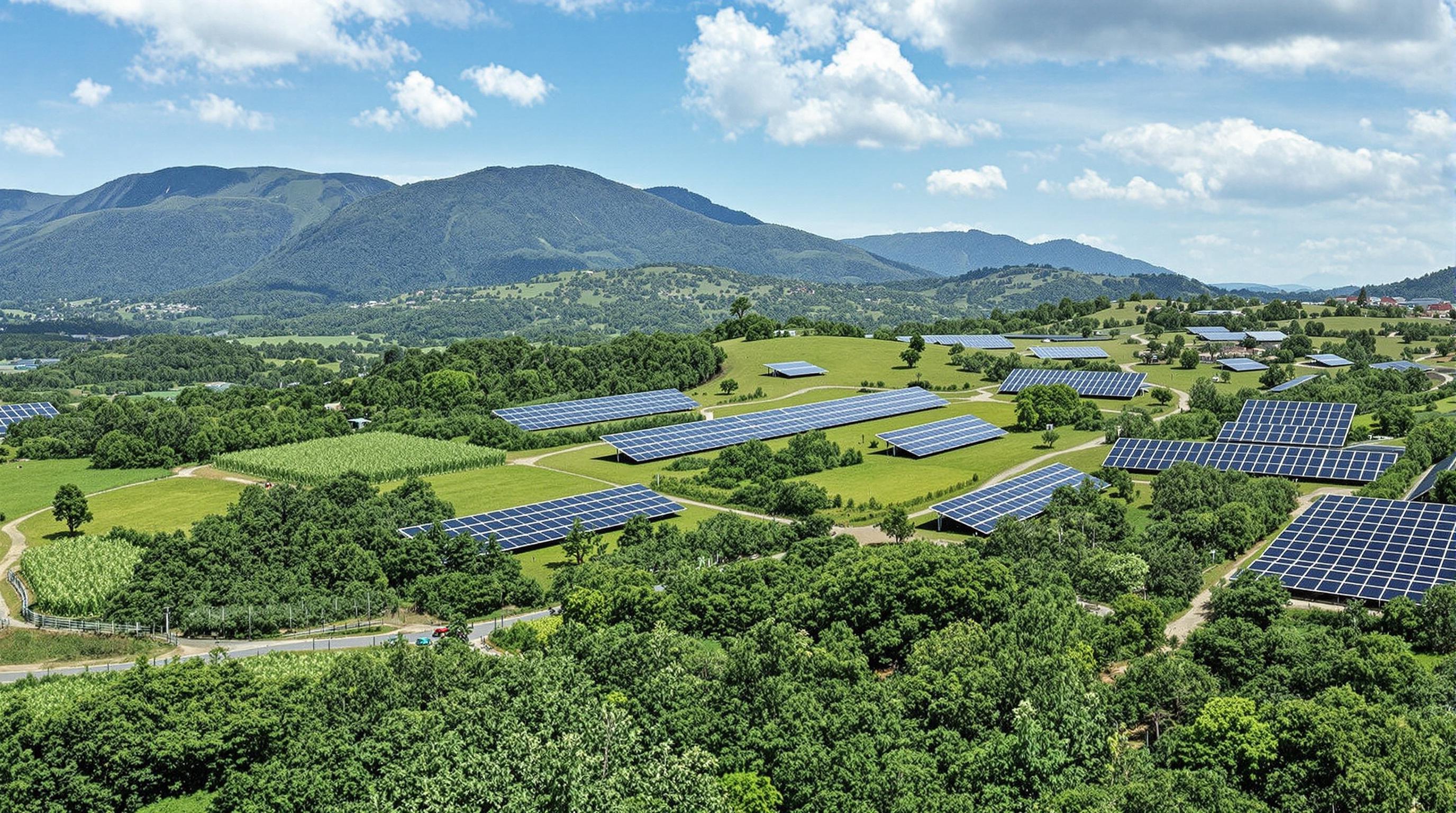Related Articles
- 7 Game-Changing Off-Grid Solar Kits from the Last 5 Years Ranked for Peak Performance and Reliability
- Uncovering the Role of Solar Warranty Disputes in Shaping Consumer Trust and Industry Accountability
- The Role of Behavioral Economics in Shaping Unexpected Solar Investment Decisions Among Rural Entrepreneurs
- Top 5 Emerging Solar Panel Brands Since 2019 That Outlast the Competition in Real-World Tests
- Top 6 Trailblazing Ground Solar Frames Unveiled Since 2019 Revolutionizing Installation Speed and Durability
- How Biodegradable Mounting Materials Could Revolutionize Eco-Friendly SolarRoof Installations by 2030
Top 7 Innovative Solar Panel Models Since 2019: Lifespan, Warranty & ROI Compared
Top 7 Innovative Solar Panel Models Since 2019: Lifespan, Warranty & ROI Compared
Top 7 Innovative Solar Panel Models Since 2019: Lifespan, Warranty & ROI Compared
Introduction: Solar Technology Evolution
Since 2019, the solar panel industry has witnessed groundbreaking innovations aimed at maximizing efficiency, durability, and financial returns. These advancements have not only reshaped the market but also provided consumers with a broader array of choices tailored to different needs and climates. The solar revolution is accelerating, bringing us panels that last longer, generate more power, and promise compelling returns on investment.
In this article, we dive into seven of the most innovative solar panel models launched since 2019. We break down their lifespans, warranty offers, and ROI projections to offer a clear picture for homeowners, businesses, and investors. This comparative analysis is essential for making smart, future-proof solar purchasing decisions as the energy landscape evolves rapidly.
For a deeper understanding of solar tech advancements, sources such as the National Renewable Energy Laboratory (NREL) and independent testing agencies like TÜV Rheinland provide trusted performance data and real-world reliability insights (NREL, 2023; TÜV Rheinland, 2022).
1. SunPower A-Series Residential Solar Panels
SunPower’s A-Series panels are at the forefront of high-efficiency solar technology. Introduced in late 2019, these panels feature an industry-leading efficiency of over 22.8%, thanks to their Maxeon cell design that minimizes power loss due to shading or dirt. The A-Series targets residential customers looking for optimal electricity production in limited rooftop space.
The expected lifespan of these panels hovers around 40 years, surpassing the standard 25-30 years, with degradation rates as low as 0.25% annually. SunPower backs this promise with a comprehensive 25-year combined product and power warranty, covering both defects and performance guarantees.
ROI analyses for the A-Series show payback periods ranging from 6 to 9 years, depending on solar incentives and electricity costs. Although their premium price can be a hurdle, the long lifespan and higher efficiencies can generate greater savings and increase home value substantially (SunPower, 2023).
2. LG NeON 2 Black Edition
LG's NeON 2 Black Edition is lauded for its durability and aesthetic appeal, featuring a sleek all-black design ideal for modern homes. Released in 2020, it integrates LG's Cello technology, which enhances power output and reliability by replacing conventional busbars with 12 thin wires.
These panels have a rated lifespan of approximately 30 years, supported by LG’s 25-year product and performance warranty covering up to 90.6% of nominal power after 25 years. Their degradation rate is roughly 0.35% per year, ensuring a robust long-term energy yield.
While priced in the upper-market range, NeON 2’s efficiency of around 21.7% helps secure competitive ROIs, particularly in high-sunlight areas or properties where roof space is limited. Combined with LG’s strong brand reputation for quality, these factors translate into high resale values and energy cost savings (LG Solar, 2022).
3. REC Alpha Series
The REC Alpha Series launched in 2019 introduces a unique heterojunction technology that combines monocrystalline and thin-film solar concepts. This hybrid approach results in increased cell efficiency, typically around 21.7%, and superior temperature performance, ideal for warmer climates.
REC guarantees a 25-year performance warranty with less than 3% degradation in the first year and a linear degradation of 0.25% thereafter. Their panels are known for resilience against potential-induced degradation (PID) and other environmental stressors.
Financially, the REC Alpha series offers a solid ROI due to its blend of efficiency and durability. The upfront costs are moderate, but energy production over two decades tends to outstrip cheaper competitors, making it a strong contender in commercial and residential sectors alike (REC Group, 2023).
4. Q CELLS Q.PEAK DUO BLK ML-G9+ Series
Introduced in 2020, Q CELLS’ Q.PEAK DUO BLK ML-G9+ series capitalizes on Q.ANTUM technology, which improves light absorption and conversion efficiency up to 21.4%. The black frame and cell design are popular among homeowners for aesthetic integration with roofing.
The panels usually deliver a 25-year warranty that covers product defects and power output, promising 86% of original capacity after 25 years with degradation rates close to 0.5% per year. The product also resists micro-cracking and hot spots effectively.
Q CELLS offers competitive pricing making the model an attractive option for those looking for a balance between upfront cost and long-term financial benefit. ROI is often realized within 7-10 years depending on installation size and solar incentives in place (Q CELLS, 2023).
5. Panasonic HIT N340 Series
Panasonic HIT N340 series panels employ heterojunction technology and an amorphous silicon layer to greatly reduce recombination losses, achieving efficiency ratings near 20.3%. Since their introduction in 2019, they have been praised for excellent performance in high temperatures compared to typical crystalline panels.
The N340 series carries a 25-year product and performance warranty with degradation rates that are impressively low, about 0.26% annually. This reliability extends lifespan expectations well into 30 years of service with consistent output levels.
Although Panasonic panels tend to be priced at a premium, their superior performance in hot and humid climates often results in enhanced electricity generation and strong ROIs in relevant regions. Buyer reviews suggest excellent durability and energy savings justify the price premium (Panasonic, 2022).
6. Canadian Solar HiDM CS3L-MS
The HiDM (High-Density Module) CS3L-MS series from Canadian Solar launched in 2019 with a focus on large-scale commercial installations. Employing multi-busbar (MBB) technology, these panels boast efficiency ratings around 20.4% with improved current collection and reduced resistance losses.
The warranty period covers 12 years for product defects and 25 years for performance, with an industry standard degradation rate close to 0.5% per year. Also noted for robust PID resistance and mechanical strength, these panels are designed to handle demanding environmental conditions.
Canadian Solar models typically offer lower upfront prices than premium brands, which enhances their appeal for commercial projects targeting fast ROI. Energy yield analyses indicate payback periods often under 6 years when paired with appropriate incentives, a strong value proposition for developers (Canadian Solar, 2023).
7. JinkoSolar Tiger Pro 72HC
JinkoSolar’s Tiger Pro 72HC series emerged as a flagship offering in 2021, featuring half-cut cell technology that reduces electrical losses and increases reliability. With efficiencies surpassing 21%, these panels are optimized for high output in commercial rooftop and ground-mount systems.
Their product warranty spans 12 years, with a performance warranty extending 25 years guaranteeing 83% minimum power retention. Degradation rates are claimed at less than 0.45% annually, supported by rigorous quality control and anti-PID measures.
JinkoSolar's competitive pricing combined with high efficiency allows for attractive ROI metrics in large-scale projects. Market analysts highlight their Tiger Pro model as a strong contender in price-sensitive markets needing reliable long-term energy production (JinkoSolar, 2023).
Comparative Lifespan and Warranty Summary
Regarding lifespan, SunPower’s A-Series leads with an estimated 40 years, significantly above industry averages. Most other models like LG NeON 2, Panasonic HIT, and REC Alpha estimate around 30 years of effective service life, enabled through slow annual degradation rates.
Warranty terms across the board typically hover around 25 years for performance, with product defect warranties ranging from 12 years (common in many models like JinkoSolar and Canadian Solar) to 25 years (SunPower, LG). Longer warranties signal manufacturers’ confidence in panel durability and provide end-users with peace of mind.
It's crucial for buyers to weigh warranty coverage details and degradation assumptions, as panel longevity directly impacts long-term ROI. While lengthier warranties might come with higher prices, they often reduce maintenance and replacement risks, delivering financial security over a solar system’s life.
ROI Insights: Making Solar Investments Count
ROIs for these innovative panels depend heavily on upfront costs, government incentives, local electricity prices, and installation scale. Premium brands like SunPower and Panasonic often involve higher initial investments but compensate through superior efficiency and longevity.
Mid-range panels like LG NeON 2, REC Alpha, and Q CELLS offer balanced options combining efficiency and affordability, appealing to a broad residential market. Commercial and utility-scale investors tend to favor brands like Canadian Solar or JinkoSolar, benefiting from scale and cost-effectiveness.
Ultimately, a well-researched solar purchase that aligns panel technology with site-specific factors ensures maximum financial returns. Independent studies reported by agencies such as NREL affirm that selecting high-efficiency panels with strong warranties reduces total cost of ownership and accelerates break-even periods substantially (NREL, 2023).
Conclusion: The Future of Solar Panel Innovation
The last five years have showcased incredible strides in solar panel development, with manufacturers pushing boundaries in efficiency, durability, and design. These technological advancements have fundamentally altered how consumers approach solar investments.
With lifespans extending beyond three decades and warranties providing stronger safety nets, solar panels now offer business and residential users unparalleled financial and environmental benefits. Making an informed choice among these top models ensures both immediate and long-term rewards in the clean energy transition.
As global demand for renewable energy continues to grow, ongoing innovation will further enhance solar panel capabilities. Staying abreast of these changes is key for anyone aiming to maximize the value and impact of their solar power installations.




